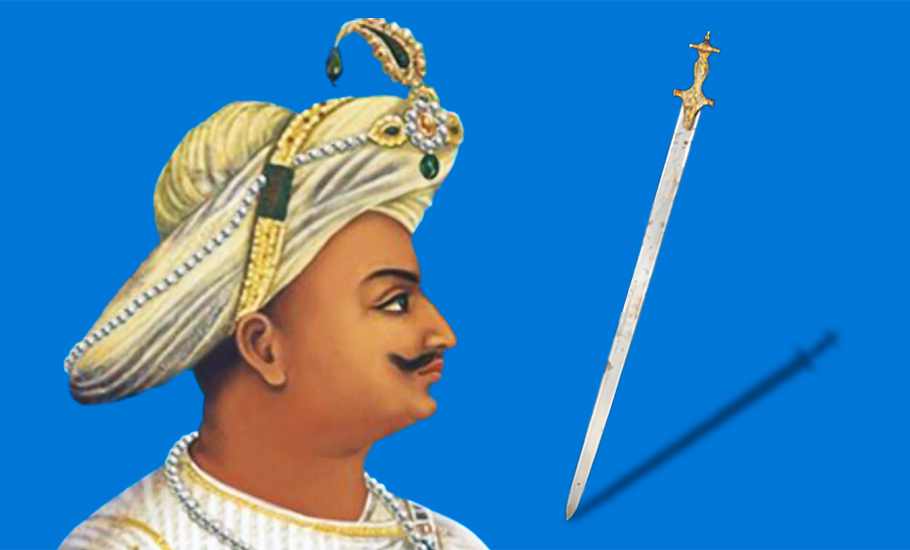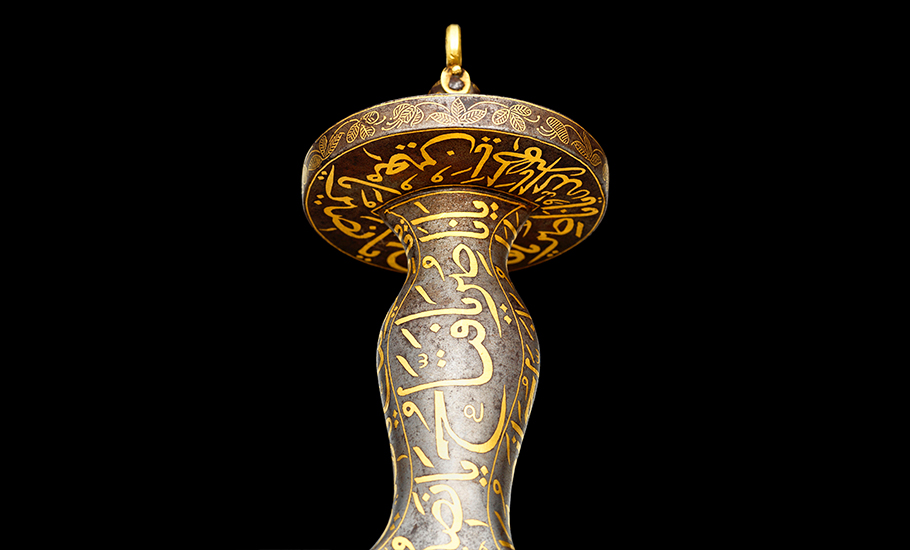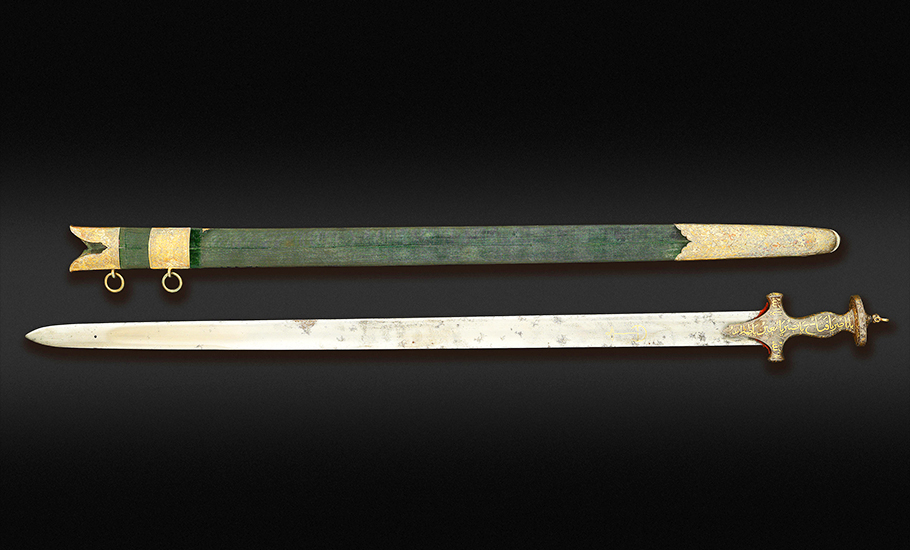
- Home
- News
- Analysis
- States
- Perspective
- Videos
- Education
- Entertainment
- Elections
- World Cup 2023
- Features
- Health
- Business
- Series
- Economy Series
- Earth Day
- Kashmir’s Frozen Turbulence
- India@75
- The legend of Ramjanmabhoomi
- Liberalisation@30
- How to tame a dragon
- Celebrating biodiversity
- Farm Matters
- 50 days of solitude
- Bringing Migrants Home
- Budget 2020
- Jharkhand Votes
- The Federal Investigates
- The Federal Impact
- Vanishing Sand
- Gandhi @ 150
- Andhra Today
- Field report
- Operation Gulmarg
- Pandemic @1 Mn in India
- The Federal Year-End
- The Zero Year
- Premium
- Science
- Brand studio
- Home
- NewsNews
- Analysis
- StatesStates
- PerspectivePerspective
- VideosVideos
- Entertainment
- ElectionsElections
- Sports
- Loading...
Sports - Features
- BusinessBusiness
- Premium
- Loading...
Premium

Vijay Mallya to Bonhams: How Tipu Sultan’s sword went from Rs 1.5 crore to Rs 145 crore

On June 6, Maharashtra’s Kolhapur found itself on the edge as people, enraged over social media posts showing images of 18th-century Mysore ruler Tipu Sultan accompanied by an objectionable slogan in the form of an audio, took to streets. Clashes broke out between Hindus and Muslims, following which a curfew was imposed and internet services were shut down. On June 9, a statue of Tipu...
On June 6, Maharashtra’s Kolhapur found itself on the edge as people, enraged over social media posts showing images of 18th-century Mysore ruler Tipu Sultan accompanied by an objectionable slogan in the form of an audio, took to streets. Clashes broke out between Hindus and Muslims, following which a curfew was imposed and internet services were shut down.
On June 9, a statue of Tipu Sultan, which the authorities claimed was illegally built, was razed to the ground in Dhule by the authorities, as they tried to bring normalcy to the region. While the statue of Tipu, who ruled from 1782 to 1799, has been demolished, his sword lives 224 years after the Mysuru ruler’s death. But just like everything else linked to Tipu, the sword too is battling controversies.
Bought by fugitive liquor baron and businessman Vijay Mallya in 2004 during an auction, the sword has reportedly been bought by an unknown person in an auction organised by Bonhams, a privately owned international auction house. Tipu’s bedchamber sword went under the hammer at a whopping £14 million (Rs 145 crore).
The fabled sword
The gold handle of the steel sword is engraved with Koftgari — the weapon art of the tribal kings of Rajasthan. “Tipu got the sword after his father died in 1782 and he took over the reins of Mysore. The sword is engraved with Thuluth, a script variety of Islamic calligraphy, and Bubri motifs. It is about 100 cm long and is considered a valuable piece of Indian history,” said Dr Diwakar Rao, a History teacher in a college under Mysuru University.

In a press statement Bonhams said, “Tipu Sultan’s fabled bedchamber sword sold for £14 million (about Rs 145 crore) at Bonhams Islamic and Indian Art sale in London today (Tuesday 23 May 2023). It had an estimate of £1,500,000-£2,000,000. This is a new auction world record for an Indian and Islamic object.”
While the world is jaw-dropping over the price at which the sword has been bought, many are flummoxed over how the sword reached London and how it went from Mallya to Bonhams.
The sword has exchanged many a hands even in the past after its real owner died at the hands of the British forces. Tipu, as is well known, was the pioneer of rocket artillery in the 18th century and fought against the British, defeating them twice. He, however, died in the 4th Anglo-Mysore war in Srirangapatna, his capital.
The ‘Tiger of Mysuru’ used a gun, which had 21 bullets and the gold-hilted sword during his final battle. As Tipu died on May 4, 1799, the British East India Company looted his palace in Srirangapatna and moved the looted valuables to England. It is said the officers and soldiers of the British army distributed a few items from the loot among themselves.
According to historians, Major Thomas Hart, who was part of the British army, took away Tipu’s gun and sword and gifted it to the then King of Britain, King George. A few later, however, the sword was back in the custody of Thomas Hart’s family. The Hart family was also in possession of similar articles taken during wars in India and other British colonies. Unbeknown to the historical value of the articles, the Harts kept the articles in boxes. In the decades that followed, the family realised that these articles could bring in a lot of money and so auctioned them. Mallya bought Tipu’s famed sword in one such auction in 2004. Interestingly, it is now learnt that Bonhams organised the auction of the sword on behalf the Hart family.
Describing the importance of the sword, Bonhams, in its statement said, “As described by Francis Buchanan in his on-the-spot account describing Tipu’s palace immediately after the siege, a sword lay within reach of the Sultan while he slept. (On constant alert against attack, Tipu slept in a hammock suspended from the ceiling of his locked and bolted bed-chamber with a pair of pistols and a sword by his side). The weapon is of exceptional quality. The blade, which is inscribed ‘The Sword of the Ruler’ is particularly fine. It was manufactured by Mughal swordsmiths following the model of German blades introduced to India in the 16th century. The hilt is inlaid in exquisitely executed gold calligraphy with five of the qualities of God and two invocations calling on God by name. The sword was presented to Major General David Baird, by the army ‘as a token of their high esteem of his courage and conduct in the assault with he commanded and in which Tipo Sultan was slain’. Baird had led the soldiers on May 4 which finally ended the month-long siege of Seringapatam.”
Speaking before the auction, Oliver White, Bonhams Head of Islamic and Indian Art and auctioneer, said, “This spectacular sword is the greatest of all the weapons linked to Tipu Sultan still in private hands. Its close personal association with the Sultan, its impeccable provenance traceable to the very day it was captured, and the outstanding craftsmanship that went into its manufacture make it unique and highly desirable.”

Appreciating the antiquity and the history of the sword, Nima Sagharchi, Group Head of Islamic and Indian Art, said, “The sword has an extraordinary history, an astonishing provenance and unrivalled craftsmanship. It was no surprise it was so hotly contested between two phone bidders and a bidder in the room. We are delighted with the result.”
The Sword of Tipu Sultan
Tipu’s heroics had always been known and spoken about, but it was in 1990 that his sword came to acquire a place of prominence in history after Doordarshan broadcast The Sword of Tipu Sultan, produced and directed by Sanjay Khan, who also played Tipu in the serial.
The television drama was a real-life portrayal of the life and times of Tipu Sultan. The serial, however, hit headlines a year before it was telecast for unfortunate reasons. On February 8, 1989, a fire broke out in the Premier Studio of Mysuru, where the serial was being shot. As many as 62 people died in the incident. Sanjay Khan himself suffered burn injuries and had to undergo 72 surgeries.
Also Read | In Karnataka poll season, how Tipu Sultan’s killers caught by BJP went missing
There wasn’t much talk about the sword after the initial euphoria around the serial petered out. Cut to 2004, and there was once again curiosity around the sword after Bengaluru-based businessman Mallya bought it in an auction held in London for Rs 1.5 crore.
But why did Mallya spend Rs 1.5 crore on a sword?
Mallya wasn’t just a businessman. He also nurtured political aspirations and so became a member of the Akhila Bharata Janata Dal. In 2003, he switched to the Subramanian Swamy-led Janata Party and became the national working president of the party. It was said that to attract Muslim votes to the Janata Party, Mallya bought the famed sword and gave a surprise to Karnataka, in 2004. Mallya also gave the move a nationalistic spin – a son of India had brought back an Indian treasure.
In what can be called a full 360-degree turn of events, the sword has now been auctioned by Bonhams at the behest of the Hart family.
From Mallya to Hart family
Until Bomhans announced the auction, all that was known about the sword was that Mallya could have taken the sword with him when he left the country. When authorities in India began confiscating his assets, the sword was missing. It was speculated that he could have sold it to someone in India or taken it along.
The matter came to light when a consortium of 13 Indian banks tried to convince the London High Court against discharging a freeze order on the global assets of Mallya. The Indian banks told the court that Indian banks are at risk of Mallya ‘dissipating his assets’.
Mallya, who owes about Rs 9,000 crore to Indian banks, is learnt to have tried to give away the rare sword after his family said “it brought bad luck”.
A former colleague of Mallya had claimed that the businessman tried to give away Tipu’s sword to a reputed museum for safekeeping but the latter refused. The museum reportedly cited preservation and maintenance issues. No one knew what Mallya did with the sword after the refusal.
After Bonhams auctioned the sword, questions on Mallya’s association with the artefact resurfaced. Did Mallya give the sword to the Hart family, or did he auction it directly?
Experts say while it may not be clear how the sword reached London, it looks amply certain that Mallya is on the wrong side of the law in taking it out of the country.
“The Fugitive Economic Offenders (FEO) Act, 2018 empowers any special court (set up under the Prevention of Money Laundering Act, 2002) in India to confiscate the property of an economic offender,” senior advocate N Devaraj told The Federal.
“The Act allows a person to be declared a fugitive economic offender if he has left the country and refuses to return to face prosecution in India,” he added.
Mallya is a declared fugitive economic offender.
The economic and cultural offence
“Mallya left India and took shelter in the UK in March 2016. In doing so he has violated the FEO Act and if at all he sold the property without the knowledge of Indian law enforcement agencies, then it is a crime,” Devaraj said. “According to the Act, the property found on the fugitive accused may be material evidence,” he added.
But Mallya’s offence isn’t only about being a fugitive economic offender who fled with his property, Tipu’s sword is an artefact which compounds his offence.
Senior Karnataka High Court counsel George Lorzurus says, “Article 49 and Article 51 A(f) of the Indian Constitution place a lot of importance on the protection of our heritage property. It is the state’s right to protect such cultural property. In this case, Mallya bought the sword 20 years back. But the authorities such as the Archaeological Survey of India (ASI) haven’t tried to get it into their possession. The state must protect cultural properties that have historical relevance.”

“The sword of Tipu Sultan is our cultural property and the Indian authorities should ask Britain about why the sword is with them. How can the auctioning agency in London sell Tipu’s sword once it was brought to India? How can it go into the hands of someone in the UK to sell the said property,” Lorzurus asked.
“There are several loopholes in this case. There are violations in this case under the Antiquities and Art Treasures Act of 1972. The problems could have been resolved if the Antiquities and Art Treasures Regulation, Export and Import Bill, 2017, had been passed by Parliament,” he said.
The Draft Antiquities and Art Treasures Regulation, Export and Import Bill, 2017, prohibits the export of antiques from India. As per the Bill, exports of antiquities are to be done only by government or its agencies. The Bill aims to check smuggling of antiquity in the international market.
Mallya seems to have taken advantage of this loophole, but interestingly, the Indian government has shown no interest in getting the sword in its possession despite the fugitive having wanted to give it away.
“Yes, he bought it in an auction in London and brought it to India. Legally, he can claim that it is his property as he paid for it. The Indian authorities kept quiet. It is clearly known he wanted to give it away. There are reports that Mallya tried to handover the sword to a government museum in Karnataka, but the authorities did not show interest. Now, he might have sold it back in London,” said Dr Raja Rao, a retired official of ASI.
“As the sword was his ‘property’, it was his wish to sell it or not. But this case is complicated as the sword represents the cultural heritage of Karnataka and has a historical value. Efforts should have been made to prevent Mallya from taking it away” Rao told The Federal.
In 2019, however, Karnataka’s Department of Archaeology, Museums and Heritage came to know about a gold-handed tambul box — a small box used to keep betel leaves and areca quids — and a gun used by Tipu Sultan in London. Taking note of an article published in Britain’s prestigious e-paper Metro, the officials wrote a letter to the State Tourism Department asking them to bring the articles back to Karnataka. “But the process never moved ahead,” an official working with the department said.
The Central government, on its part, too never showed any interest in the matter.
One reason the Indian government showed little interest in the sword could be that the Right-Wing government sees Tipu as a barbaric ruler who killed Hindus in large numbers and has used him to polarise voters. Any attempt to assign value to anything linked to Tipu, especially a sword he used to fight wars, could have antagonised voters who have been fed on hatred for Tipu.
While Bonhams has not shared the details of who bought the sword ultimately, India seems to have lost by not fighting for its historical asset and letting London keep it.

